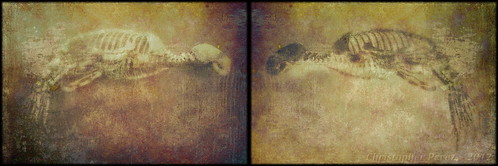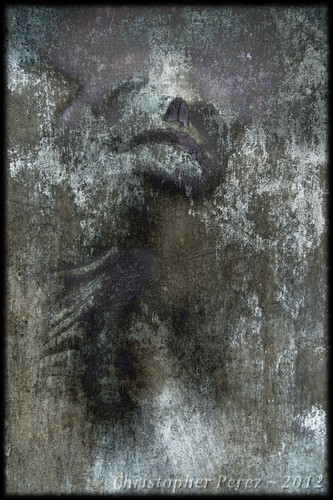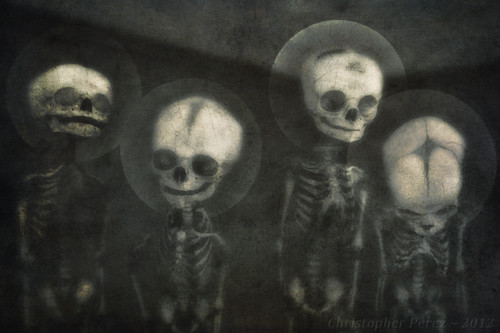A recent post on Mike Johnson's "The Online Photographer" started me thinking. Perhaps I'm thinking a bit too hard, but I'm thinking.
The topic is image properties verses image quality.

I feel it's all too easy for photographers to hide behind a camera and assume that the equipment will provide enough quality in an image to make it appreciated by viewers: Resolution, contrast, color rendition. It seems all too easy to assume a photographer only has to provide content and all the rest will become "good" if only one had the right camera gear.
If I understand Mike's comments correctly, image quality is not the issue. Rather, it is the properties of an image that lend it meaningful qualities that we as viewers can appreciate and like. In general I agree with Mike's sentiments on this topic.
Somewhere in the middle of the article, Mike said "Consider that during the time of the pictorialist movement—and among the amateurs that kept its values alive in its aftermath—the same assumption held sway, except in the reverse. Image unsharpness was the virtue, the accepted convention."

I formulated a short rant about pictorialist photography where I brought William Mortensen into the fray. Thinking back to Saint Ansel's autobiography, I was shocked to read the violence with which St. Ansel attacked Mr Mortensen's pictorialist approach to image making. St Adams derided the lack of clarity in Mortensen's images and looked forward to the day when the pictorialist was dead.
It was from this perspective that I responded to Mike's article. Contrasting modern photographic approaches where image quality is somehow ensued with what I thought Mike was talking about when he mentioned the pictorialist movement.
I said, pick up a copy of William Mortensen's "Pictorial Lighting" and "Pictorial Photography", and you will read nowhere in the entire text anything that extolls "unsharpness" over "sharpness". Quite the contrary. Indeed, the High Priest of Pictorial image making (Mr. Mortensen)stresses the importance of presenting a clear image with a clear vision and a clear result.

Petzval formula lenses (followed by a great many "portrait" lenses) have been in wide use, but even these optical tools provide a sharp image at the point of focus. How the out of focus areas are rendered is part of the optical designs of these kinds of lenses.
The only tools that seem to approach out of focus image making that I'm familiar with are achieved through the use of pinhole "lenses" and zone plates. Yet, it can be argued, even these are not truly "unsharp".
To me (and this was my key point), pictorial image making has more to do with exploring an idea and creating an image that represents that idea, as compared to finding a scene/subject and snapping an image of it.
Mike came back with "Oh, dear. Not even close."

Confused, I used the Force (Google) to look up pictorialist photography. Now I am even more confused and wonder what people can mean when they use the two words, pictorialist photography. I know what I mean. I know what I have read. I know how I understand the words. Yet, I'm at sea wondering what I have missed.
There seems to be a rather wide range of interpretations of these two words, pictorialist photography.
The topic is image properties verses image quality.

I feel it's all too easy for photographers to hide behind a camera and assume that the equipment will provide enough quality in an image to make it appreciated by viewers: Resolution, contrast, color rendition. It seems all too easy to assume a photographer only has to provide content and all the rest will become "good" if only one had the right camera gear.
If I understand Mike's comments correctly, image quality is not the issue. Rather, it is the properties of an image that lend it meaningful qualities that we as viewers can appreciate and like. In general I agree with Mike's sentiments on this topic.
Somewhere in the middle of the article, Mike said "Consider that during the time of the pictorialist movement—and among the amateurs that kept its values alive in its aftermath—the same assumption held sway, except in the reverse. Image unsharpness was the virtue, the accepted convention."

I formulated a short rant about pictorialist photography where I brought William Mortensen into the fray. Thinking back to Saint Ansel's autobiography, I was shocked to read the violence with which St. Ansel attacked Mr Mortensen's pictorialist approach to image making. St Adams derided the lack of clarity in Mortensen's images and looked forward to the day when the pictorialist was dead.
It was from this perspective that I responded to Mike's article. Contrasting modern photographic approaches where image quality is somehow ensued with what I thought Mike was talking about when he mentioned the pictorialist movement.
I said, pick up a copy of William Mortensen's "Pictorial Lighting" and "Pictorial Photography", and you will read nowhere in the entire text anything that extolls "unsharpness" over "sharpness". Quite the contrary. Indeed, the High Priest of Pictorial image making (Mr. Mortensen)stresses the importance of presenting a clear image with a clear vision and a clear result.

Petzval formula lenses (followed by a great many "portrait" lenses) have been in wide use, but even these optical tools provide a sharp image at the point of focus. How the out of focus areas are rendered is part of the optical designs of these kinds of lenses.
The only tools that seem to approach out of focus image making that I'm familiar with are achieved through the use of pinhole "lenses" and zone plates. Yet, it can be argued, even these are not truly "unsharp".
To me (and this was my key point), pictorial image making has more to do with exploring an idea and creating an image that represents that idea, as compared to finding a scene/subject and snapping an image of it.
Mike came back with "Oh, dear. Not even close."

Confused, I used the Force (Google) to look up pictorialist photography. Now I am even more confused and wonder what people can mean when they use the two words, pictorialist photography. I know what I mean. I know what I have read. I know how I understand the words. Yet, I'm at sea wondering what I have missed.
There seems to be a rather wide range of interpretations of these two words, pictorialist photography.
No comments:
Post a Comment